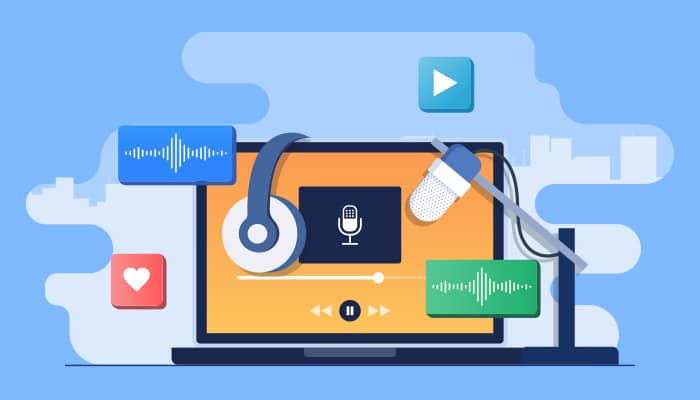Introduction
Transcribed audio and video content refers to the process of converting spoken words in audio or video files into written text. This conversion enables content creators to provide a textual representation of their multimedia content. Transcriptions capture dialogue, narration, and other audio elements, making them accessible in written form. They can be created manually by human transcribers or generated automatically using speech recognition technology. Transcriptions are often used for various purposes, including accessibility, content optimization, and repurposing. By transcribing audio and video content, creators make their material more inclusive, searchable, and versatile.
SEO (Search Engine Optimization) and engagement are crucial aspects of content creation that directly impact the visibility and effectiveness of online content. SEO ensures that content ranks well in search engine results, making it more discoverable to users. Engaging content, on the other hand, captivates and retains the attention of the audience, fostering interaction, shares, and conversions. Both SEO and engagement are essential for driving traffic, building brand awareness, and ultimately achieving business goals in the digital landscape.
Transcribed content serves as a powerful tool for enhancing both SEO rankings and audience engagement simultaneously. By providing textual representations of audio and video content, transcriptions improve accessibility, searchability, and readability. This accessibility not only caters to diverse audience needs but also enables search engines to better understand and index the content, thereby boosting SEO rankings. Additionally, transcriptions offer opportunities for repurposing content into various formats, driving engagement across different platforms and audience preferences. Thus, leveraging transcribed content in content creation strategies can effectively optimize both SEO performance and audience engagement metrics.
The Role of Transcriptions in SEO
Definition of SEO and Its Significance
Search Engine Optimization (SEO) is the practice of optimizing web content to rank higher in search engine results pages (SERPs) for specific keywords or phrases. Its significance is that most online experiences begin with a search engine query, making it crucial for businesses and content creators to ensure their content is visible and easily discoverable. By aligning with SEO best practices, such as keyword optimization, high-quality content creation, and technical optimization, websites can attract more organic traffic and ultimately achieve their business goals, whether that’s driving sales, increasing brand awareness, or generating leads.
How Search Engines Understand and Rank Content
Search engines use complex algorithms to analyze and rank content based on various factors, including relevance, authority, and user experience. They crawl web pages to understand their content and context, considering factors like keyword usage, backlinks, page load speed, and mobile friendliness. By understanding user intent and delivering the most relevant and valuable results, search engines aim to provide the best possible experience for their users.
The Impact of Transcribed Content on Search Engine Algorithms
Transcribed content plays a significant role in SEO as it provides search engines with textual representations of audio and video content. This text can be indexed and analyzed by search engine algorithms, allowing them to better understand the content and context of multimedia files. Transcriptions also enable search engines to match user queries with relevant content more accurately, improving the chances of ranking higher in search results.
Examples of Successful SEO Strategies Using Transcribed Content
Numerous successful SEO strategies leverage transcribed content to enhance visibility and engagement. For instance, podcasts often include transcripts on their websites, allowing search engines to index the spoken content and make it searchable. Similarly, video content creators provide captions or transcripts, making their videos more accessible to a wider audience and improving their chances of ranking in search results. By incorporating transcribed content into their SEO strategies, businesses can reach a broader audience and improve their organic search performance.
Enhancing Audience Engagement through Transcriptions
- Accessibility benefits of transcriptions for various audiences (e.g., hearing impaired): Transcriptions play a crucial role in making audio and video content accessible to individuals with hearing impairments. By providing a text-based version of the content, transcriptions ensure that everyone, regardless of their hearing abilities, can fully engage with the material. This inclusivity not only broadens the audience reach but also demonstrates a commitment to diversity and equality. Moreover, transcriptions can be easily translated into different languages, further expanding accessibility on a global scale. Overall, by catering to the needs of the hearing-impaired audience, transcriptions enhance engagement by fostering a more inclusive and welcoming environment.
- Improving user experience with searchable, readable content: Transcriptions transform audio and video content into searchable and readable formats, enhancing the overall user experience. Users can quickly find relevant information by searching within the text, saving time and effort. Additionally, transcriptions make content more digestible by breaking it down into smaller, easier-to-read segments. This improves comprehension and retention, leading to higher engagement levels. Moreover, transcriptions enable users to consume content in environments where audio or video playback may not be feasible or appropriate, such as in noisy environments or quiet settings where silence is preferred. By providing a seamless and convenient experience, transcriptions contribute to increased user satisfaction and engagement.
- Creating multiple content formats from transcriptions (e.g., blog posts, social media snippets): Transcriptions serve as a valuable source of raw material for creating various content formats, thereby maximizing engagement opportunities. Content creators can repurpose transcriptions into blog posts, articles, social media snippets, infographics, and more, catering to different audience preferences and consumption habits. This multi-channel approach ensures that the content reaches a wider audience across different platforms and channels. Furthermore, repurposing transcriptions allows for content optimization based on the unique requirements of each platform, such as character limits on social media or SEO optimization for blog posts. By leveraging transcriptions to create diverse content formats, content creators can maintain audience interest and engagement over time.
4 Best Practices for Transcribing Audio and Video Content
- Choosing the right transcription method involves weighing the trade-offs between automated and human transcription. Automated transcription offers speed and cost-efficiency but may lack accuracy, especially with accents or technical jargon. Human transcription ensures higher accuracy and nuanced understanding but can be slower and more expensive.
- Ensuring accuracy and clarity requires careful review and proofreading of transcriptions. Double-checking the original audio or video is essential, along with correcting any errors in grammar, spelling, or context. Clarity can be enhanced by using clear and concise language, avoiding jargon, and adding timestamps for reference.
- Formatting and structuring transcriptions for SEO and readability involves optimizing content with relevant keywords, headers, and meta descriptions. Breaking down the text into paragraphs, bullet points, or subheadings improves readability. Additionally, using HTML tags for formatting can enhance SEO performance by making the content more accessible to search engine crawlers.
- Tools and resources for efficient transcription processes include both automated transcription software like Otter.ai or Rev, and professional transcription services. These tools streamline the transcription process by offering features like speaker identification, timestamp insertion, and integration with editing software. Additionally, speech-to-text APIs like Google Cloud Speech-to-Text or IBM Watson Speech to Text can be integrated into custom workflows for more specialized needs.
Implementing Transcribed Content in Content Creation Strategies
- Integrating transcribed content into content calendars and workflows involves seamlessly weaving transcriptions into your existing content creation processes. By incorporating transcribed content into your content calendar, you ensure that it’s given the same level of consideration and planning as any other content format. This means scheduling transcription tasks alongside other content creation activities and allocating resources accordingly. Additionally, integrating transcriptions into workflows ensures that they undergo the same quality control measures, editing, and approval processes as other content types before publication. This integration streamlines the overall content creation process, allowing for efficient production and consistent delivery of transcribed content alongside other formats.
- Utilizing transcriptions for repurposing content across different platforms leverages the versatility of transcribed content by repurposing it into various formats suitable for different platforms. Transcriptions serve as a valuable source material for creating blog posts, social media posts, infographics, podcasts, and more. By repurposing transcribed content, you maximize its reach and engagement potential across multiple channels, catering to diverse audience preferences. This approach not only saves time and resources but also ensures a cohesive brand message across different platforms, reinforcing brand visibility and authority.
- Measuring the impact of transcribed content on SEO and engagement metrics involves tracking key performance indicators to evaluate the effectiveness of transcribed content in driving organic traffic and audience engagement. Utilize analytics tools to monitor metrics such as website traffic, keyword rankings, bounce rates, time on page, social shares, and conversion rates specifically attributed to transcribed content. Analyzing these metrics provides insights into the content’s search visibility, relevance, and audience resonance. By understanding the impact of transcribed content on SEO and engagement, you can refine your content strategies to optimize performance and achieve desired objectives.
- Continuous optimization and refinement of transcribed content strategies entail ongoing evaluation and adjustment of your approach to maximize effectiveness and adapt to changing trends and audience preferences. This process involves analyzing performance data, gathering feedback, and staying abreast of industry developments to identify areas for improvement. Refinement may include fine-tuning transcription accuracy, optimizing content structure and formatting for better readability and SEO, experimenting with different distribution channels, and exploring innovative ways to repurpose transcribed content. By continuously optimizing transcribed content strategies, you ensure that your content remains relevant, resonates with your target audience, and contributes to your overall content marketing objectives.
Conclusion
The integration of transcribed audio and video content into content creation strategies presents a multifaceted approach to enhancing both SEO performance and audience engagement. By providing textual representations of multimedia content, transcriptions not only improve accessibility and searchability but also offer opportunities for content repurposing across various platforms. This comprehensive approach ensures that content remains inclusive, discoverable, and adaptable to diverse audience preferences. As content creators continue to leverage transcriptions in their strategies, continuous optimization and refinement will be key to maximizing the impact of transcribed content on SEO rankings and audience engagement metrics, ultimately driving success in the ever-evolving digital landscape.







